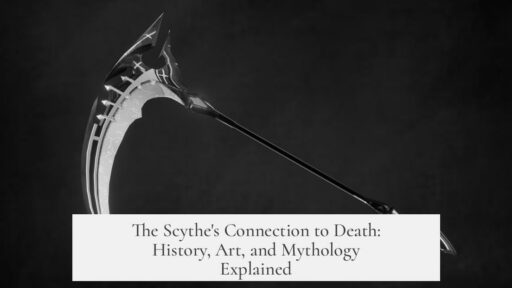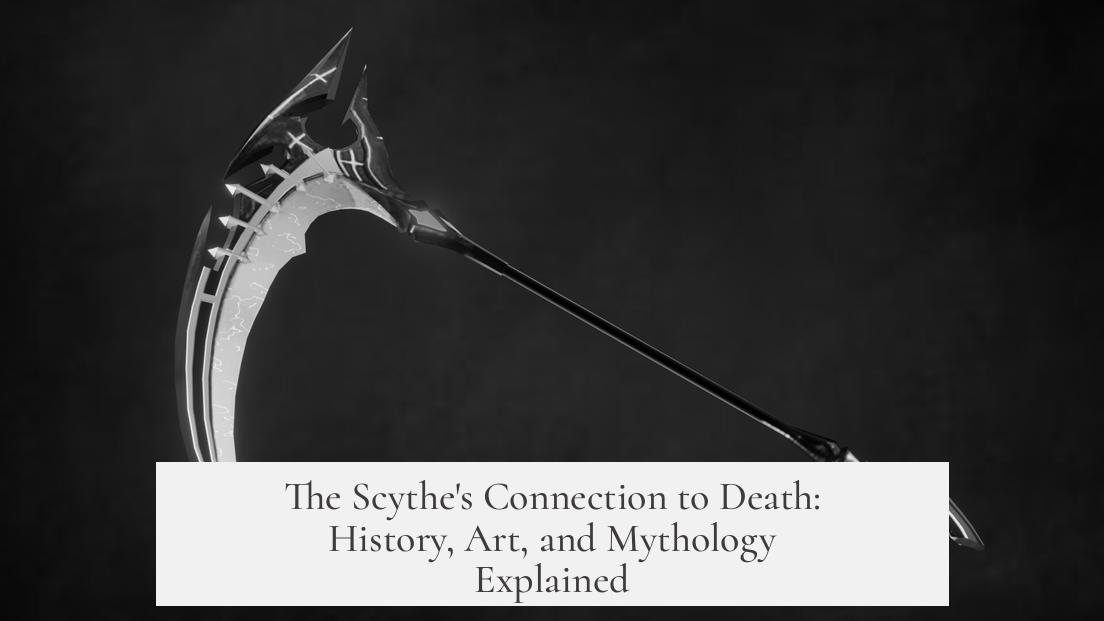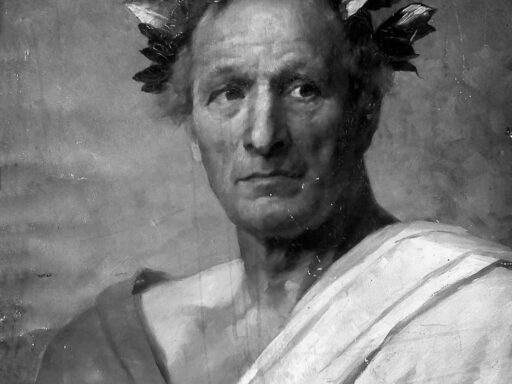The scythe becomes associated with death during the 14th century, evolving from earlier symbolic uses of agricultural tools as instruments of divine judgment and soul harvesting. This transformation culminates in the modern Grim Reaper figure wielding a scythe, a process that began with biblical metaphors and matured through medieval and Renaissance art.

The earliest textual link between death and a reaping tool appears in the Bible, specifically in Revelation 14:14-16. Here, a figure resembling the Son of Man holds a sharp sickle to reap the earth’s harvest, a metaphor for divine judgment and the gathering of souls. This passage provides the spiritual foundation for associating a harvest instrument with Death as a cosmic reaper.
Moving from text to image, early medieval artwork reflects this metaphor with some variations. The Uta Codex (circa 1020-1025), a Bavarian manuscript, shows Death holding a broken sickle alongside a broken spear. However, Death in this depiction is not triumphant; the broken sickle symbolizes Death’s defeat by Christ, reflecting Christian themes of salvation rather than fatal finality. Here, the sickle signifies the potential to reap but lacks the grim success later emphasized.
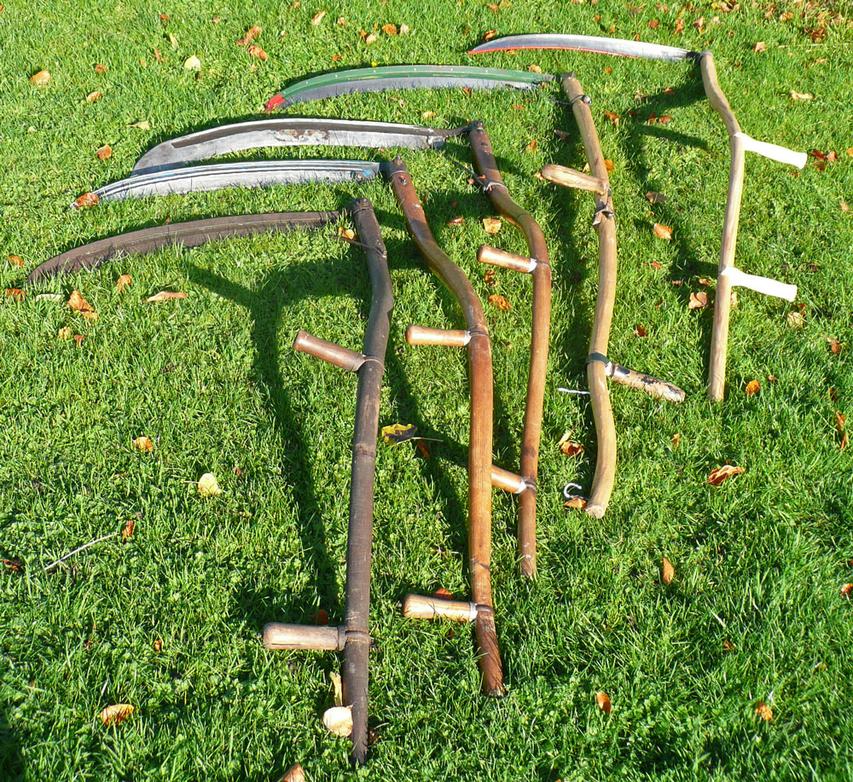
By the early 15th century, illustrated works like the Biblia pauperum continue to show Death holding a broken spear, leaving the sickle or scythe out of the imagery. These representations illustrate that the connection between Death and a harvest instrument remained unstable and evolving through medieval Europe. The instrument of reaping was symbolically present but not yet codified as part of Death’s identity.
The emergence of the modern Grim Reaper—a skeletal figure carrying a scythe—occurs in 14th-century Italy, notably between 1335 and 1340. Two pivotal paintings mark this shift: The Triumph of Death (circa 1336-1341) and The Allegory of Redemption (circa 1335-1340). These works depict Death as triumphant and active, wielding a scythe with intent to harvest human lives. The transformation from a sickle to a larger scythe as Death’s instrument signals a more ominous, pervasive force. The figure evolves into a dark harbinger of mortality, no longer defeated but victorious.
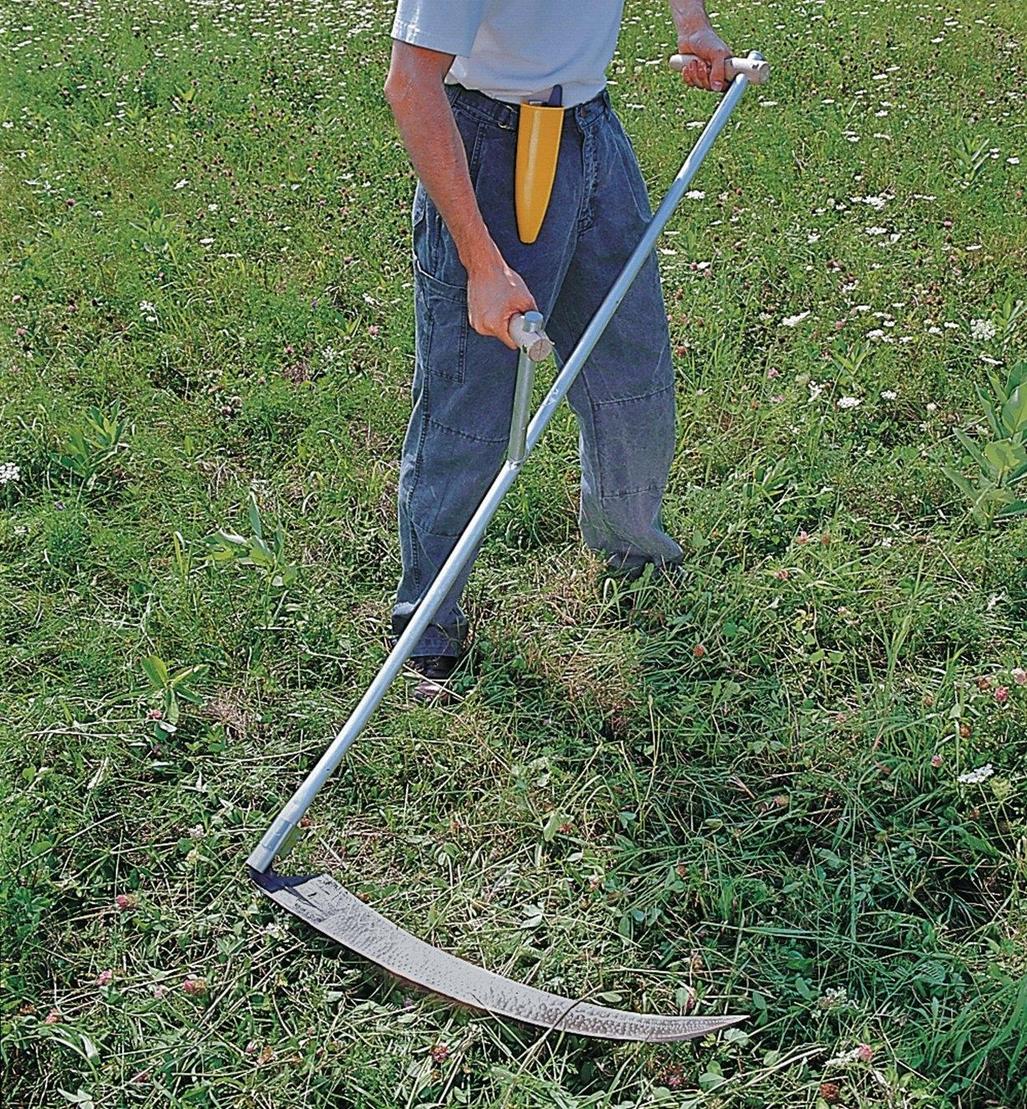
Following Italy’s lead, the scythe grows into a consistent symbol across European art from the 14th through the 16th centuries. Notable examples include later versions of The Triumph of Death in Palermo (c. 1440-1445), Flemish paintings around 1510, and Pieter Bruegel the Elder’s 1562 work. These pieces show Death equipped with a scythe, solidifying its cultural meaning as the tool of mortal harvesting. By the Renaissance, the Grim Reaper’s scythe is an integral part of Europe’s visual language conveying death.
The scythe’s symbolic power also derives from mythological and agricultural associations. Saturn, the Roman god of harvest and time, often appears carrying a sickle or scythe. Saturn’s role spans harvest and the inexorable movement of time, emphasizing fate and mortality. Some Renaissance artworks, such as Bruegel’s Triumph of Time (1574), explore this connection, linking Death’s harvest with time’s passage and the inevitable approach of death.
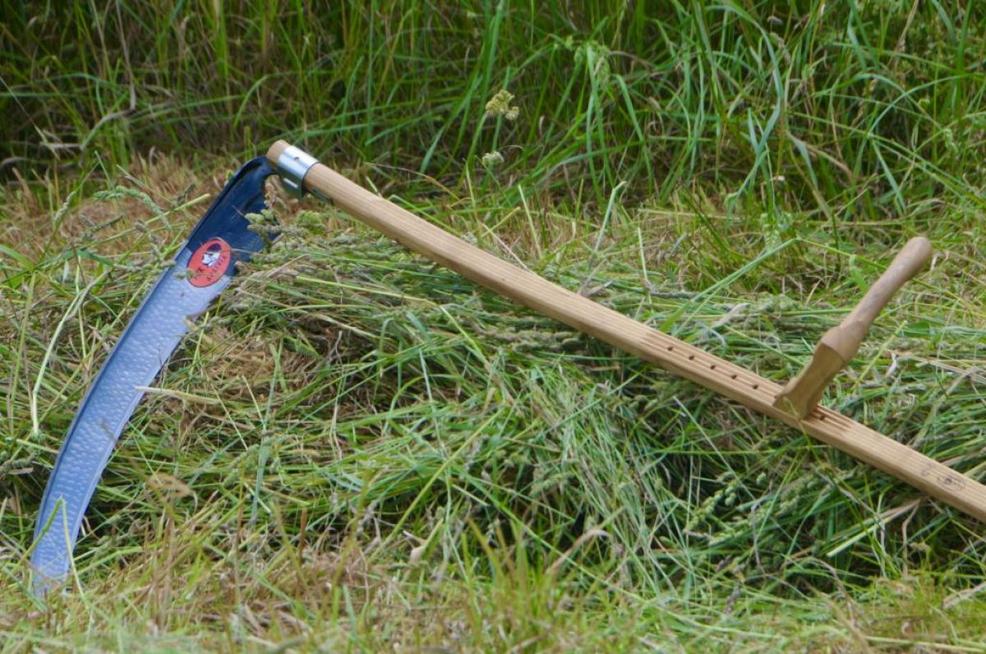
| Period | Key Development | Significance |
|---|---|---|
| 1st Century (Biblical Era) | Revelation metaphor of sickle reaping souls | Foundational symbolic association of harvesting with divine death |
| Early 11th Century | Uta Codex: Death holds broken sickle | Death depicted as conquered; sickle symbol present but weak |
| Early 15th Century | Biblia pauperum: Death without sickle, holds broken spear | Reaping tool less central; death less defined by harvest instrument |
| Mid 14th Century | Italian paintings introduce scythe-wielding Death | First triumphant Grim Reaper figure, scythe firmly linked to death |
| 15th-16th Centuries | Spread of Grim Reaper with scythe across Europe | Iconography solidifies; scythe definitive symbol of Death |
| Throughout Renaissance | Mythological ties to Saturn and Time emerge | Symbolic fusion of death, time, and harvest in cultural imagery |
- The scythe enters death symbolism primarily in the mid-14th century Italy.
- Its association builds on biblical metaphors, medieval art, and mythological harvest gods.
- Death’s figure evolves from defeated to triumphant, linking the scythe to mortality’s inevitability.
- The symbol spreads throughout Europe during the Renaissance, becoming a universal emblem of death.
- Saturn’s role as harvest and time god reinforces the scythe’s link to the passage of life and death.
When, and How, Did the Scythe Become Associated with Death?
Ever wondered why Death is always shown wielding a big ol’ scythe? That sweeping, eerie tool slicing through the air as if reaping souls instead of wheat? The association between the scythe and Death dates back centuries, rooted in biblical metaphor and evolving through art and myth to become the iconic Grim Reaper we all recognize today. Let’s journey through time to uncover when and how this chilling symbol took root.
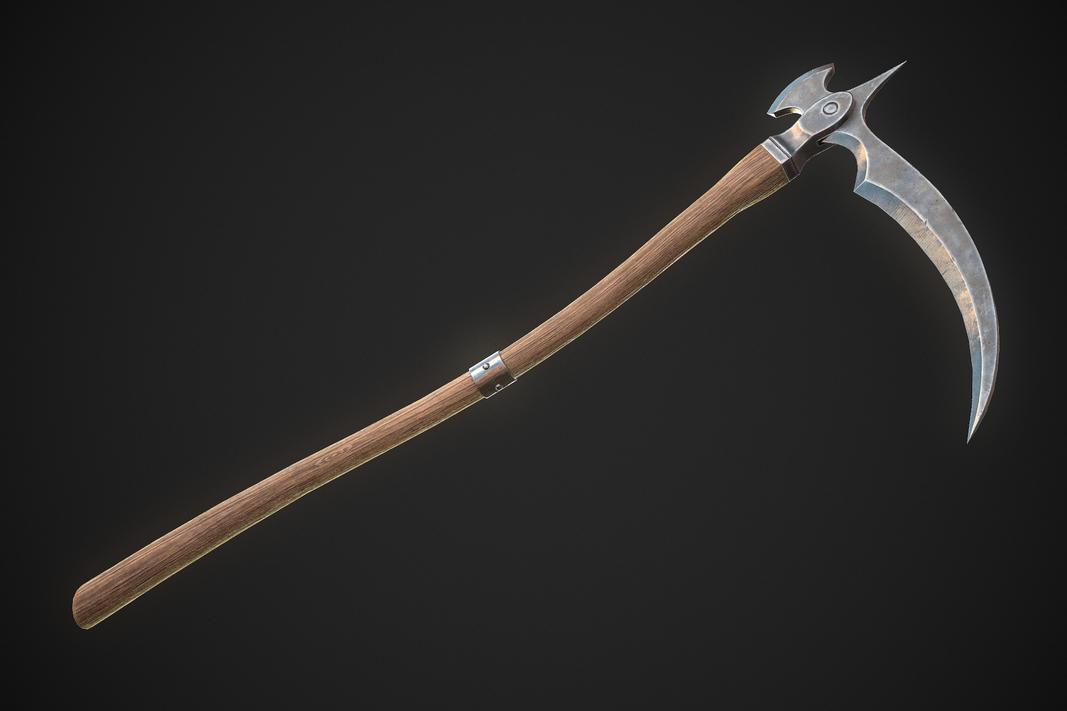
Biblical Roots: The Sickle of Judgment
Our story begins in one of the most dramatic and mystical parts of the Bible—the book of Revelation. In Revelation 14:14-16, a figure “like unto the Son of Man” is seen holding a sharp sickle, poised to reap the earth because the harvest is ripe. This harvest isn’t about crops, but souls and divine judgment.

“And he that sat on the cloud thrust in his sickle on the earth, and the earth was reaped.”
This vivid metaphor marks the earliest textual link between a reaping instrument—a sickle—and the concept of death or divine reckoning. Here, the sickle isn’t about farming; it symbolizes the harvesting of humanity’s destiny, an image both powerful and ominous.
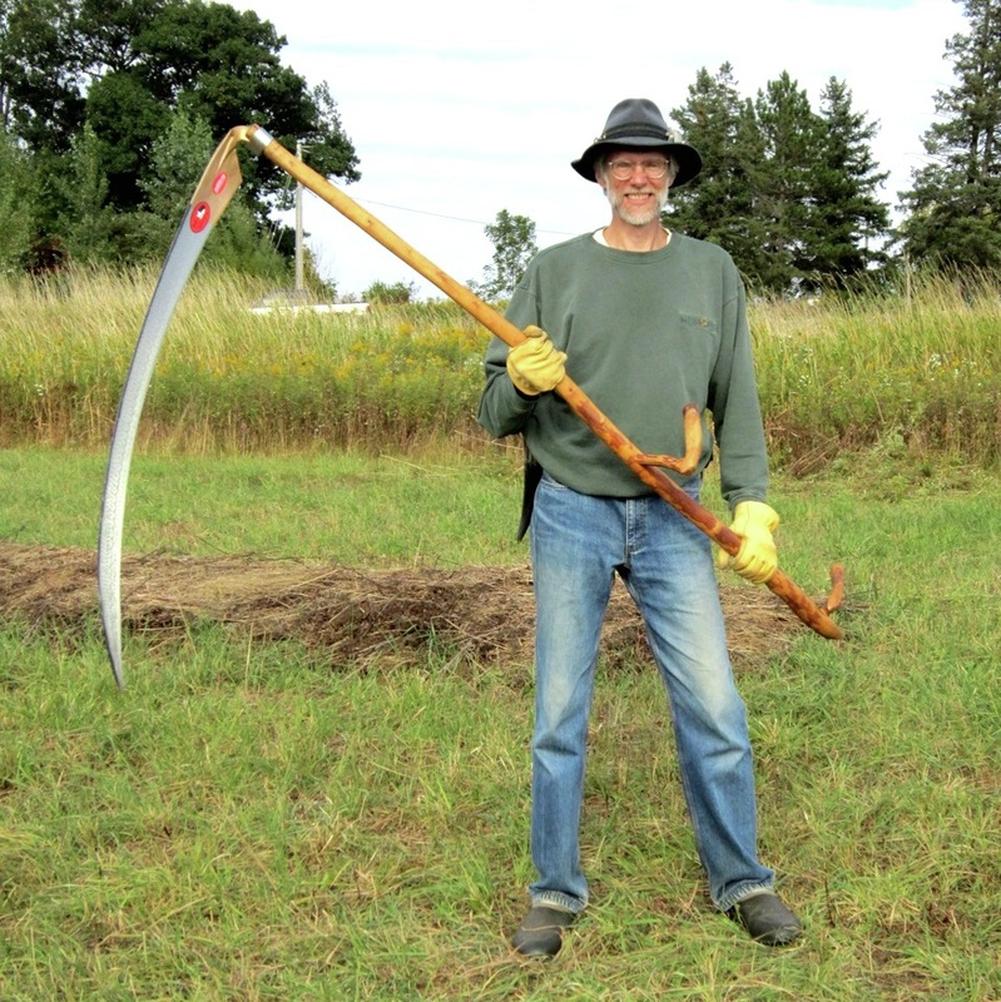
In the Bible, there is no Grim Reaper figure, no black cloak, just a divine harvester ready to reap the earth at the ordained time.
Early Artistic Depictions: The Sickle and Defeated Death
Flash forward to the early Middle Ages, when artists started depicting Death as a personified figure. One of the earliest visual connections appears in the Uta Codex, created around 1020-1025 in Bavaria. Here, Death isn’t triumphant and terrifying yet.
The image shows Death holding a broken sickle and a broken spear. The broken sickle is symbolic — Death has been conquered by Christ and holds a weakened form of power.
Mors devicta peris qui christum vincere gestis (You perish, conquered death, because you desire to conquer Christ)
This isn’t the menacing Reaper we imagine. Instead, it’s a humble reminder that Death was subdued—that eternal life through Christ overcomes death. Notice something: no scythe yet, only the sickle, and a broken one to boot. The scythe, with its frightening blade, hadn’t entered the scene.
Jump a few centuries to the early 1400s and the Biblia pauperum. Death is still there, holding pieces of weapons but not the sickle or scythe prominently. The reaping implement doesn’t dominate Death’s image. The narrative takes time to evolve.
The Birth of the Grim Reaper: Italy, 14th Century
Now comes the crucial turning point around 1335-1340 in Italy. The plague was sweeping Europe, and the idea of Death grew darker and more fearsome. Two famous paintings from this era, The Triumph of Death and The Allegory of Redemption, depict Death clearly holding a scythe—not a sickle—and now with wings and other grim features.
The scythe, a larger tool with a long curved blade, replaced the sickle in Death’s hand. This change wasn’t just cosmetic. The scythe’s sweep suggested the inevitability and scope of death—it harvests broadly, cutting down everything in its path. Death isn’t just a defeated figure anymore but a triumphant harvester.
In these 14th-century images, Death actively harvests humanity, echoing the grim realities of the plague and the time’s preoccupations with mortality.
Spread Across Europe: The Scythe as Death’s Trademark
After its Italian debut, the scythe became Death’s trusty companion across Europe through the 14th to 16th centuries. Artistic masterpieces like the Triumph of Death in Palermo and paintings by Pieter Bruegel the Elder featured Death holding a scythe.
| Artwork | Date | Notable Features |
|---|---|---|
| The Triumph of Death (Palermo) | c. 1440-1445 | Death wields a bow; scythe is carried on saddle |
| The Triumph of Death (Flemish School) | c. 1510 | Scythe prominently shown as Death’s tool |
| The Triumph of Death (Pieter Bruegel the Elder) | c. 1562 | Iconic depiction of Death with scythe harvesting hordes of souls |
By the Renaissance, the Grim Reaper with his deadly scythe was no longer just art—it was a deep symbol embedded in European culture. The scythe’s meaning expanded beyond the tool itself to represent the inevitability of death, the reaping of souls, and the passage of time.
The Mythological Connection: Saturn, Time, and Death’s Scythe
Interestingly, the scythe’s origins delve deeper than crop fields or church scriptures. Mythology ties the scythe to Saturn, the Roman god of harvest and time. Saturn’s dual roles connect the scythe symbol to both agricultural cycles and the relentless march of time.
Some artworks, like Bruegel’s Triumph of Time (1574), depict Saturn with a scythe, emphasizing the close link between time’s passage and mortality. In this context, Death’s scythe symbolizes more than just soul-harvesting—it underscores that time cuts down all living things eventually.
This layered symbolism enriches the image of the Grim Reaper: he wields a scythe because death *harvests* like a farmer, but also because time itself—represented by the scythe—makes death *inevitable*.
So, Why the Scythe?
- Harvest tool metaphor: Death reaps souls like a farmer harvesting crops.
- Biblical imagery: The sickle in Revelation set the stage for this metaphor.
- Artistic evolution: From broken sickles symbolizing defeated death to triumphant scythe-bearing Reapers reflecting the harsh realities of life and plague.
- Mythological backing: Saturn’s scythe connects death, harvest, and the relentless flow of time.
Think about it: without the scythe, would Death seem as powerful or ominous? Could the image of the Grim Reaper be as memorable? The sweeping curve of the scythe’s blade perfectly conveys the swift, impartial nature of death.
Lessons from History and Art
Knowing this origin story, the next time you see the Grim Reaper, you’re witnessing a rich tapestry of history, religion, and myth. It’s a symbol that evolved slowly, adapting through biblical stories, medieval art, Renaissance masterpieces, and ancient myths about the inexorable power of time.
Death’s scythe teaches us: life is finite, time is unyielding, and none escape the harvest. Rather grim? Perhaps. But there’s a strange beauty in such a powerful symbol, reminding us to cherish the moment because the reaper comes for us all, wielding a tool forged by centuries of meaning.
Final Thought:
What tool would you choose if you were the personification of Death? Would a scythe seem too rustic or just right for your eternal duties? The next time the Grim Reaper crosses your mind, remember he carries not just a farming implement but a centuries-old icon of fate, time, and the cycle of life and death.
